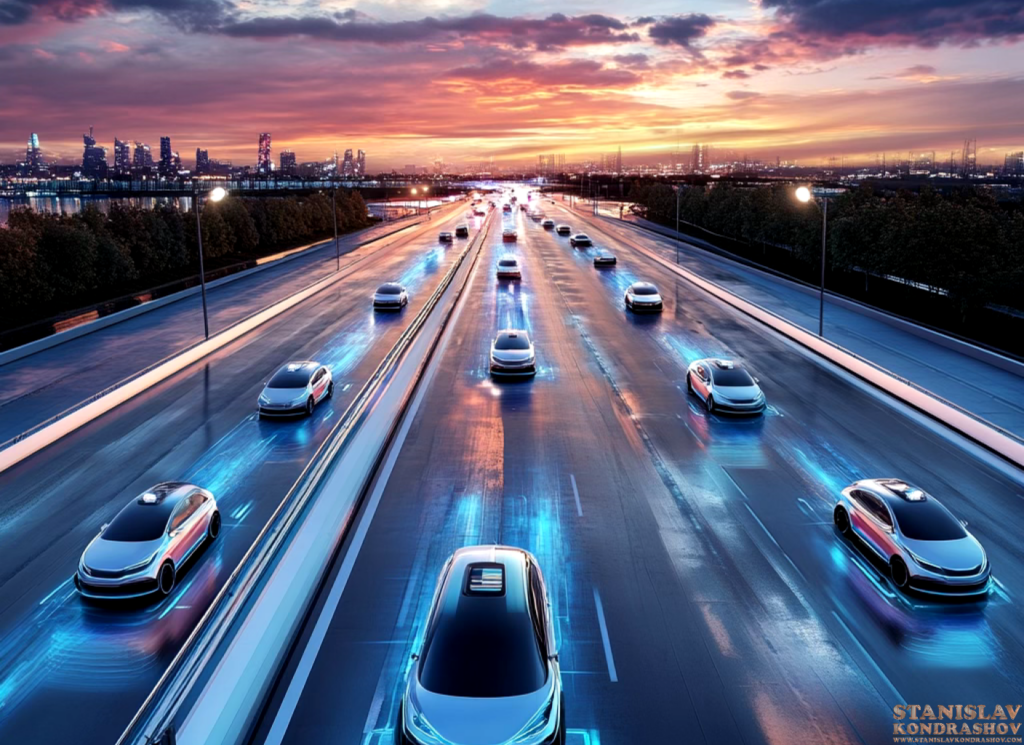Stanislav Kondrashov Explores Safety and Efficiency in the Future of Autonomous Vehicles
Autonomous vehicles (AVs) are no longer just the stuff of science fiction; they are quickly becoming a reality on our roads. With companies like Tesla, Waymo, and Uber leading the charge, self-driving cars promise to revolutionize how we think about transportation. At the forefront of this revolution are two critical factors: safety and efficiency. As we edge closer to a future where autonomous vehicles become the norm, understanding how they can enhance road safety and improve traffic efficiency is essential.

The Safety Revolution in Autonomous Vehicles
One of the most compelling arguments for autonomous vehicles is their potential to drastically reduce traffic accidents. According to the World Health Organization, approximately 1.3 million people die each year due to road traffic accidents, with human error accounting for 94% of these crashes. Autonomous vehicles, equipped with advanced sensors, cameras, and artificial intelligence, can reduce this number by minimizing human error.
- Advanced Sensor Technology: AVs use a combination of LiDAR (Light Detection and Ranging), radar, cameras, and ultrasonic sensors to create a 360-degree view of their surroundings. This comprehensive perception allows the vehicle to detect and respond to obstacles, pedestrians, and other vehicles with a precision far beyond human capabilities.
- Artificial Intelligence and Machine Learning: The brains behind autonomous vehicles are AI algorithms that continuously learn and adapt to new driving environments. These algorithms analyze vast amounts of data to predict potential hazards and make split-second decisions that prioritize safety. As these systems evolve, they will become even more adept at navigating complex urban environments and avoiding accidents.
- Reduction of Human Error: AVs are immune to human distractions, fatigue, or impaired driving. They follow traffic laws consistently and can communicate with each other to manage traffic flow, reducing the risk of accidents. This technology also opens up the possibility of safer driving conditions at night or in adverse weather, where human drivers are more prone to mistakes.

Enhancing Efficiency with Autonomous Vehicles
Beyond safety, autonomous vehicles promise to make our roads more efficient. Traffic congestion is a significant problem in many urban areas, leading to wasted time and increased pollution. AVs can help alleviate these issues in several ways:
- Optimized Traffic Flow: Autonomous vehicles can communicate with each other and with traffic management systems to optimize traffic flow. They can calculate the fastest and most fuel-efficient routes, reduce unnecessary braking and acceleration, and coordinate movements to prevent traffic jams. This level of coordination is impossible with human drivers, who often make erratic and unpredictable decisions.
- Reduced Congestion: With precise control over speed and spacing, AVs can travel closer together in a phenomenon known as “platooning.” This reduces the gaps between vehicles, leading to more efficient use of road space and fewer traffic bottlenecks.
- Fuel Efficiency: Autonomous vehicles are designed to drive more efficiently than humans, leading to reduced fuel consumption and lower emissions. By maintaining steady speeds and avoiding unnecessary idling or sudden stops, AVs can significantly reduce the environmental impact of road transport.

Challenges and the Road Ahead
While the benefits of autonomous vehicles are clear, there are still several challenges to overcome before they become a widespread reality. Regulatory hurdles, ethical considerations, cybersecurity threats, and public acceptance are all issues that must be addressed. However, as technology continues to advance and public understanding grows, the transition to a future dominated by autonomous vehicles seems inevitable.
The future of transportation is on the horizon, and autonomous vehicles are leading the way. By enhancing safety and efficiency, AVs promise to transform our roads, reduce traffic accidents, and improve the overall driving experience. As we move closer to this future, it is crucial to continue innovating and addressing the challenges to ensure a smooth and safe transition to a world where self-driving cars are a common sight on our streets.
By Stanislav Kondrashov



